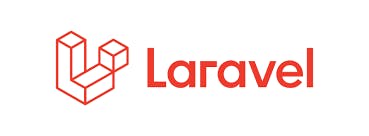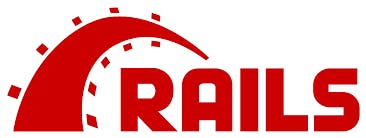Top 5 Back-End Frameworks in 2022
Users may only see the front end of a website, but what matters is the work that goes on behind the scenes.
Have you ever come across a simply stunning website? There are no other words to describe it adequately. It has the ideal aesthetic, and everything appears to be in its proper place. Then you start looking through it and realise it's all a ruse. Nothing seems to work, and the website takes excessive time to load. Naturally, you navigate away from the page and continue your search elsewhere. Catfish adventures provide, at the very least, a story to tell in real life. All you get on the internet is a bounce.
When you visit an e-commerce website, such as Asos, the appealing layout and design you see on your device are created by front-end developers. However, when you log in to your account, add the required items to the cart, make the payment, and check out. All of these server-side functionalities are handled by back-end developers.
This straightforward example demonstrates why a good back-end implementation is so essential for all websites. Users may only see the front end of a website, but what matters is the work that goes on behind the scenes. Visitors will leave if a website does not function properly. As a result, businesses would lose out on potential customers. Let’s start by defining what back-end development is and who a back end developer is and what they do.
What is Back-End Development?
Back-end development handles the ‘behind-the-scenes’ functionality of web applications. It's the code that connects the web to a database, manages user connections, and runs the web app. Back-end development collaborates with front-end development to deliver the final product to the end-user.
Who is a Back-End Developer?

Photo by True Agency on Unsplash
A back-end developer is primarily concerned with how a website functions. They write code that focuses on the functionality and logic that drives the app they're working on, and the technology they use is never visible to users.
Writing APIs, writing code to interact with a database, creating libraries, working on business processes and data architecture, and much more are all the responsibilities of a back-end developer. The role and company often determine the specific responsibilities of a back end web developer.
Top 5 Back-End Development Frameworks

Most used web frameworks among developers worldwide by Stack Overflow
Technology is improving, and back-end developers now have more tools to create outstanding websites. Back-end developers, who are in charge of the platform's server-side, have a plethora of tools to help them improve and provide the best possible user experience. Let's learn more about the back-end development tools and technologies in 2022.

1. Express JS is a Node.js framework that allows you to quickly create APIs, web applications, and cross-platform mobile apps. It serves as the foundation for a number of other popular Node web frameworks and is used to set up common web application settings such as the connection port and the location of templates for rendering the response.
It also contains mechanisms for creating handlers for requests with various HTTP verbs and URL paths (routes), and integration with "view" rendering engines to generate responses by populating templates with data. While it is a relatively simple framework, developers have created compatible middleware packages to solve almost any web development issue.

2. Django is an open-source web framework based on Python that makes web development more efficient and painless. The model-template-views (MTV) architectural pattern is followed by Django.
Some of the notable features of this framework are extensibility, rapid development, scalability, security, and a large community, which is one of the reasons for its enormous popularity and demand.
Businesses use Django for various web projects, including social networking platforms, scientific computing platforms, and content management systems. Instagram, Mozilla, Pinterest, and others are among the popular websites that use Django. If you want to embark on Python and web development, Django is a great place to start.

3. Spring is an open-source Java framework that was released under the Apache 2.0 licence in June 2003. It is used by millions of developers worldwide to create high-performing, testable, and reusable code.
Spring's web framework is a well-designed MVC framework, a great alternative to other web frameworks. It does not reinvent the wheel. Rather, it makes extensive use of existing technologies such as ORM frameworks, logging frameworks, JEE, Quartz, JDK timers, and other view technologies.
Its core features can be used in any Java application, but there are extensions for building web applications on the Java EE platform. By enabling a POJO-based programming model, the Spring framework aims to make J2EE development easier to use and promote good programming practices.

4. Laravel is one of the most widely used PHP frameworks in the industry. This open-source web framework follows the Model-View-Controller (MVC) architecture pattern, which includes a built-in command-line tool called Artisan, pre-installed Object-Oriented and Modular libraries, Eloquent ORM (Object Relational Mapping), Template Engine, and many other useful features.
Furthermore, the framework provides you with various tools for specific tasks such as dependency injection, unit testing, and so on. It includes some ready to use features like a cashier for managing subscription billing services, an envoy for defining common tasks you run on your remote servers, and Socialite for simplifying OAuth authentications with Facebook, GitHub, Google and many more.

5. Ruby on Rails: Also known as "RoR" or simply "Rails," is an open-source, server-side web development framework for the Ruby language. Rails follows the model–view–controller (MVC) pattern. It promotes and facilitates the use of web standards for data transfer, such as JSON or XML, as well as the standard HTML, CSS, and JavaScript for user interaction.
The main difference between Ruby on Rails and other development frameworks is the speed and simplicity at which developers can work within the environment. It is faster than comparable Java-based frameworks as application changes are applied immediately, avoiding the time-consuming steps associated with the web development cycle.
Summary
Things can become a bit convenient and easier for a Back-end Developer if they choose the right set of tools available in the tech world. These tools are programming languages, frameworks, database management systems, web servers, testing & deployment tools, and various others. You can opt-in for any of these tools as per your requirements.
This is in no way an exhaustive list of back-end frameworks. There are other popular back-end frameworks out there which suit the needs of different developers and companies. Some of these notable mentions include ASP.NET, ASP.NET Core, Flask, Symphony, Meteor, Drupal and Gatsby. In summary, we believe these five frameworks are worth exploring when searching for a new back-end development framework in 2022.
- Express
- Django
- Spring
- Laravel
- Ruby on Rails
Start your website project today - Get Started
